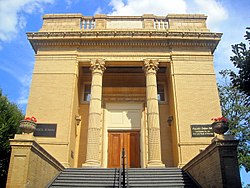 | |
 Headquarters in Washington, DC | |
| Founded | 1890 |
|---|---|
| Founder | Alexander Graham Bell |
| Focus | Speech, cochlear implants |
| Headquarters | Washington, D.C. |
| Location | |
Area served | United States |
| Method | Resources and advocacy |
Key people |
|
| Employees | 8 |
| Website | www |
The Alexander Graham Bell Association for the Deaf and Hard of Hearing, also known as AG Bell, is an organization that aims to promote listening and spoken language among people who are deaf and hard of hearing. It is headquartered in Washington, D.C., with chapters located throughout the United States and a network of international affiliates.